
Pacific Cup Profiles: Philippe Jamotte and Alex Dailey
We’re continuing our Pacific Cup profiles with the doublehander duo Philippe Jamotte and Alex Dailey. You might remember Philippe from our story about his singlehanded circumnavigation attempt aboard his 40-ft sloop Changabang. Things didn’t go as well as planned, and Philippe returned to the Bay after five weeks at sea. But he did learn a lot and is now putting that knowledge to good use in July’s Pacific Cup race to Hawaii, which he is doing together with his good friend Alex Dailey.
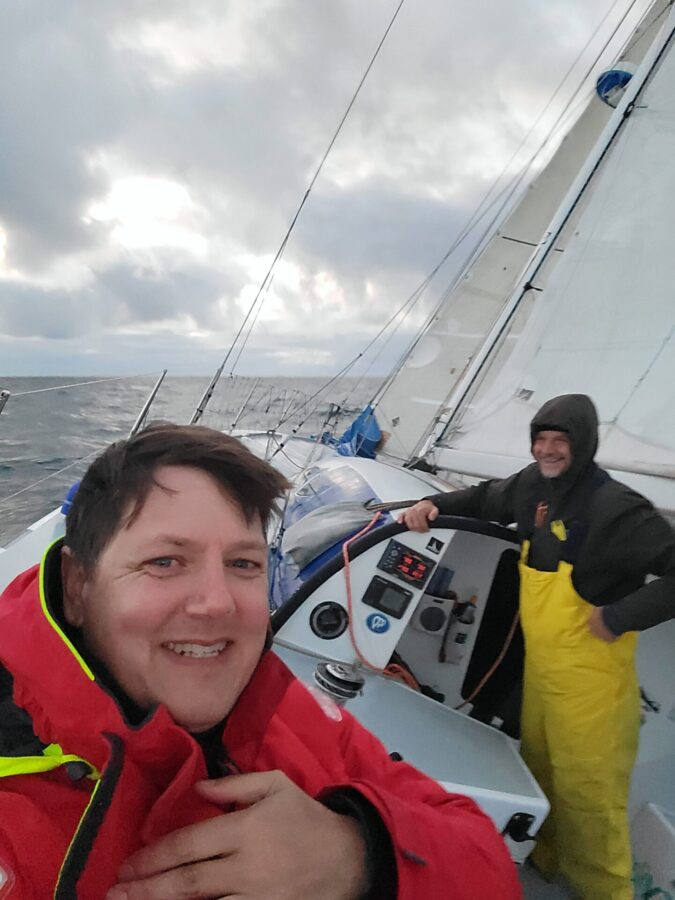
Entering the race was Alex’s idea. Previously, if one had asked why do the race, he would have answered, “It has always been a dream to sail to Hawaii.” And later, “to win it!” Now, as the pair prepare, train and tune the boat, Alex says it’s all about friendship.
“To do the Pac Cup doublehanded requires an incredible amount of preparation, trust, skill, and teamwork. It’s been fun to build a friendship with Philippe as we’ve taken on this challenge together,” Alex says. “Of course, ask me again when we arrive in K-Bay!”
Philippe adds, “It’s a good incentive to keep Changabang current and do some improvements to her here and there. It’s also the kind of downwind race that she is built for.’
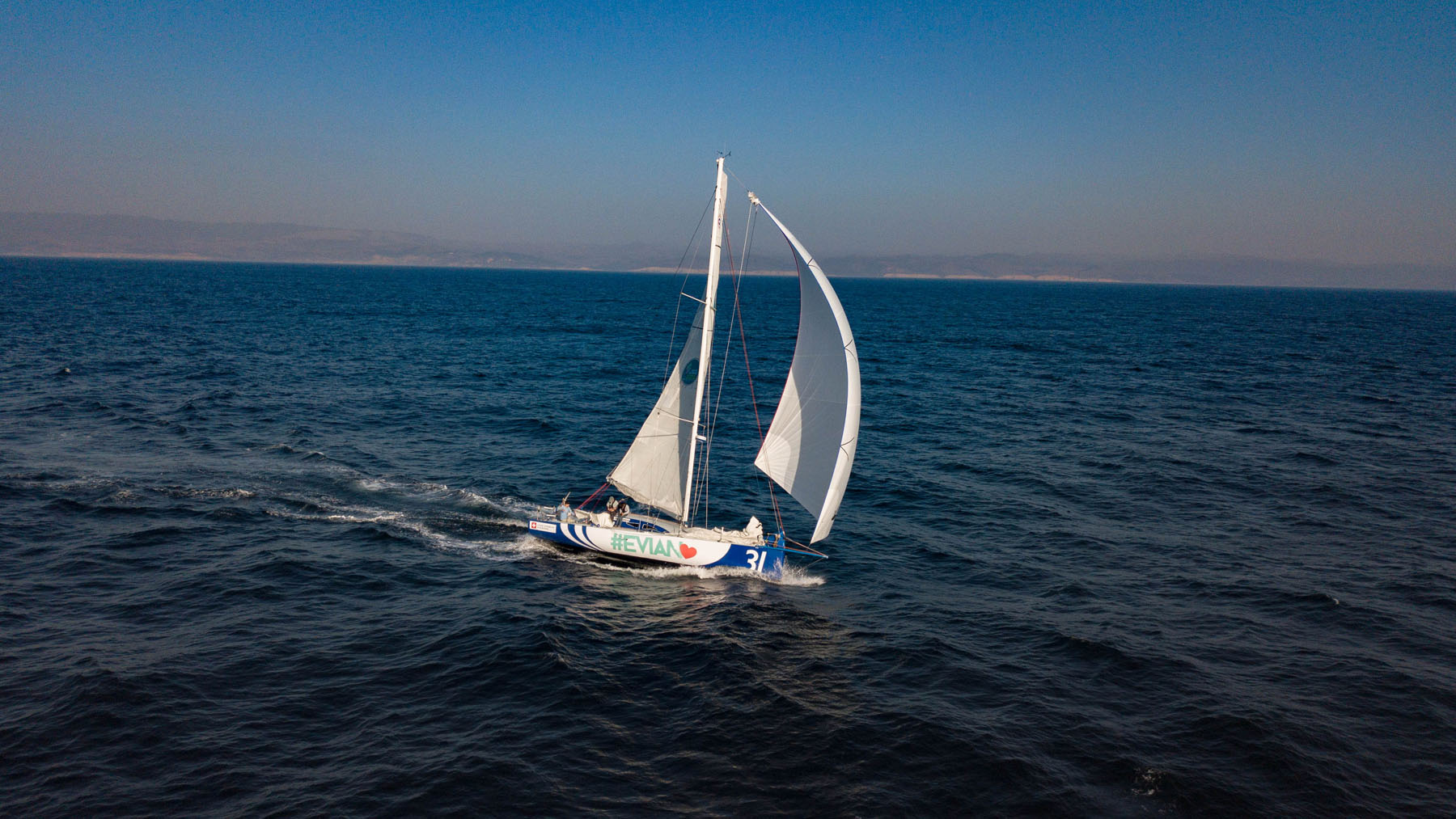
Changabang is a first-generation Class 40, built in a barn in France over several years. “I’ve met many folks who vouch for her red cedar strip-planking construction,” Philippe says. “She’s not perfect, but she often surprises me by the ingenuity of her construction.”
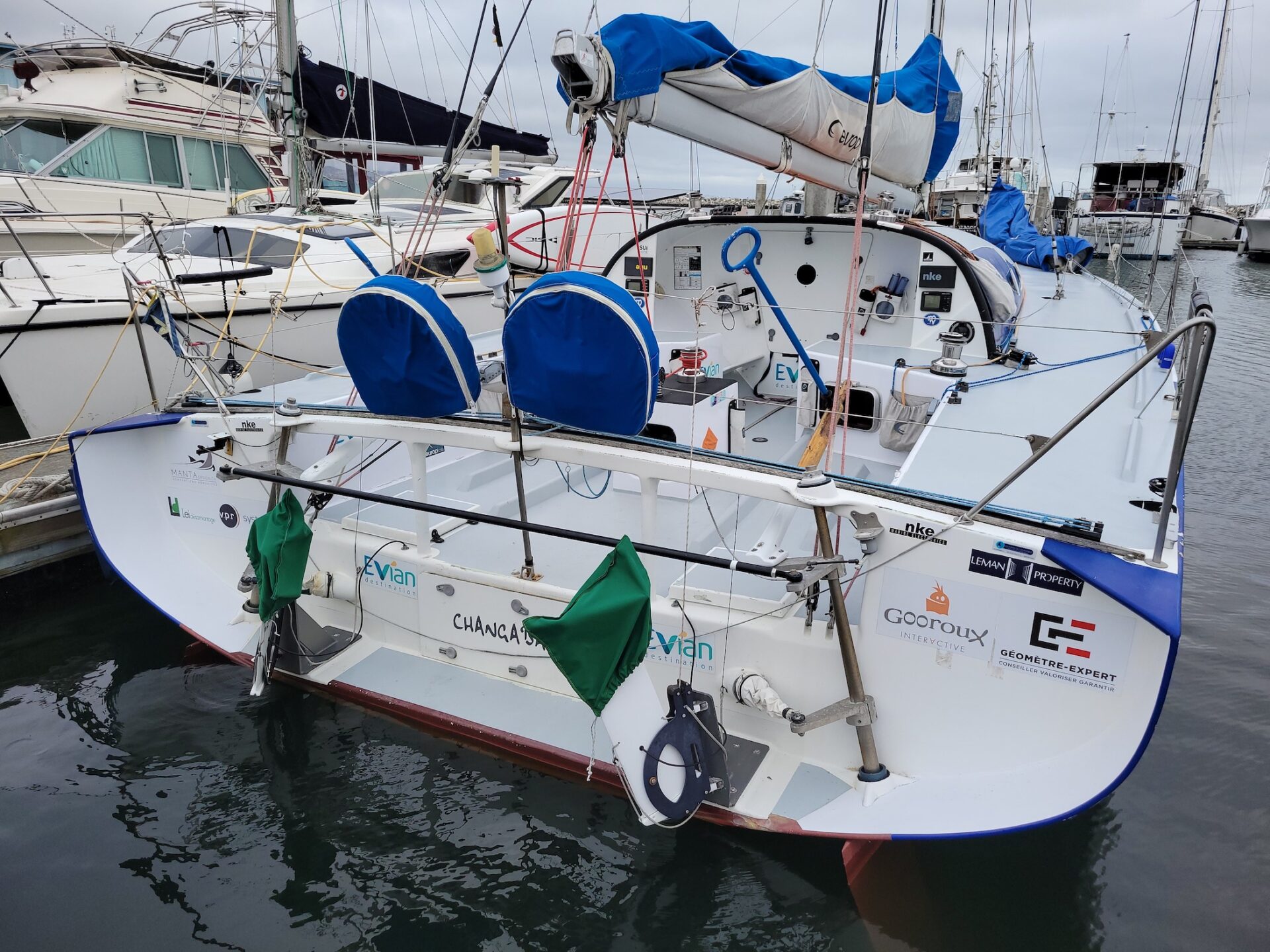
Philippe has owned Changabang for around four years, sailing her mostly offshore. Before the 40-ft sloop he had Double Espresso, which he entered in the 2018 Singlehanded Transpacific Yacht Race, and sold after arriving in Hawaii. And before that, he crossed the South Atlantic during the 2017-18 Clipper Race aboard Sanya Serenity. “Before that most of my sailing, which started in 2013, was off Redwood City’s Spinnaker Sailing school, where I learned to sail. As a family we also did a two-week cruise from Antigua to Guadeloupe to Les Saintes and back,” he adds. By contrast, Alex has been at it since he was a toddler, sailing aboard dinghies and keelboats, inshore and offshore, and has been crew and skipper for over 40 years.
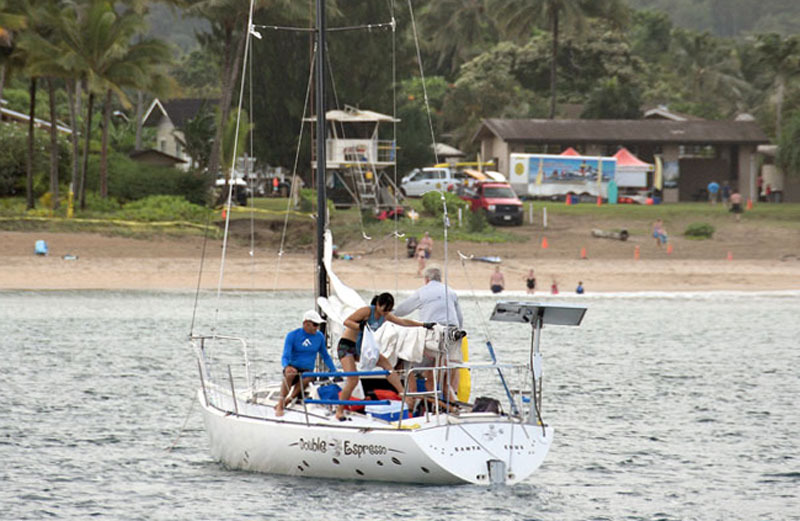
“I raced Thistle #1075 in the Norcal fleet for many years,” Alex says. “About seven years ago I leveled up on my keelboat systems and spent a few years completing the US Sailing Passage Making program. It gave me a great foundation in boat systems, offshore safety and navigation. That got me hooked on longer ocean passages. I also do a lot of virtual racing online, which is a great way to learn weather systems and routing strategy.”
Philippe and Alex met three years ago, when during a stopover in Half Moon Bay, Alex saw Changabang, thinking she looked like a “double-sized version” of the Thistles.
“I found Philippe’s blog online and emailed him out of the blue: ‘Hi! This is a total moonshot, but is there any chance you’d be interested in chatting for 30 minutes …?’ And the rest is history!”
Although the pair are currently working on upgrades for Changabang, the boat has been well maintained under Philippe’s ownership. She’s also been graced with a twin setup for hydrogenerators, along with work on her standing and running rigging, electrical equipment, sails, and more.
“Racing offshore is what she was designed for,” Philippe adds, “and maybe at the hands of top French sailors she could be a pretender to some of the trophies.
“As for me I’ll be very pleased if we get to enjoy the time offshore, all the while pulling in some good performance. And then of course there’s the return trip. All in all it’ll be another 3-4 offshore weeks aboard Changabang, getting to know her better.”
Among the people who have helped Philippe along the way, he gives special mention to some folks he also considers to be friends of the boat. “François Lucas, who designed her and is always helpful, Sylvain Barrielle of UK Sailmakers, who’s always there to answer our sails questions, [and] Atelier Cables, who helps with all standing rigging. People remember a boat like Changabang, as she was built by a well-known sailor.”
Though he adds, “Alex is really the engine behind our campaign, and I’m grateful for his friendship, support, and engagement.”
And if you ever wonder how two men can get along for such a length of time at close quarters, Alex explains their method.
“We actually carry two buckets for the head, one for each of us.”
We wish Philippe and Alex good luck, with the sailing, and the buckets. Hopefully they’ll have their names on them.
Other 2024 Pacific Cup profiles: Heather Richard, Elliott James, Matt Arno, and Andy Schwenk.
Good Jibes #130: Ryan Foland on Teaching Tempest Sailing
This week’s host, Ryan Foland, takes us behind the scenes as he gets his ASA 101 certification on a Tempest at Alamitos Bay Yacht Club (ABYC). Ryan is an ABYC member and junior staff commodore of the Blue Water Cruising Club (BWCC), and is getting his credentials to teach sailing, one of his longtime goals.

Hear what’s unique about a Tempest, how to stay patient on (and off) the water, about problem-solving at sea, how to handle low winds and high winds, and about an impromptu Tempest race. This episode covers everything from sailing on a Tempest to a tasty lunch.
Here’s a small sample of what you will hear in this episode:
- How long is a Tempest?
- What is Telemetry Sailing ?
- How much does a Tempest weigh?
- What’s the history of the Tempest?
- How windy did it get?
- What did Dustin learn today?
- How do you sail a Tempest?
- What was the best part of the day?
Learn more about Ryan at https://ryan.online/ and learn more about ABYC’s adult sailing program at ABYC.org.
Listen to the episode on Apple Podcasts, Spotify, and your other favorite podcast spots — follow and leave a 5-star review if you’re feeling the Good Jibes!
KKMI is Hiring!
USS ‘Potomac’ Heads to Dry Dock at Bay Ship, Alameda
The historic presidential yacht USS Potomac will be dry-docked at Bay Ship, Alameda, on March 11. The 165-ft vessel is hauled out every 30 to 36 months for US Coast Guard inspection and any needed repairs.
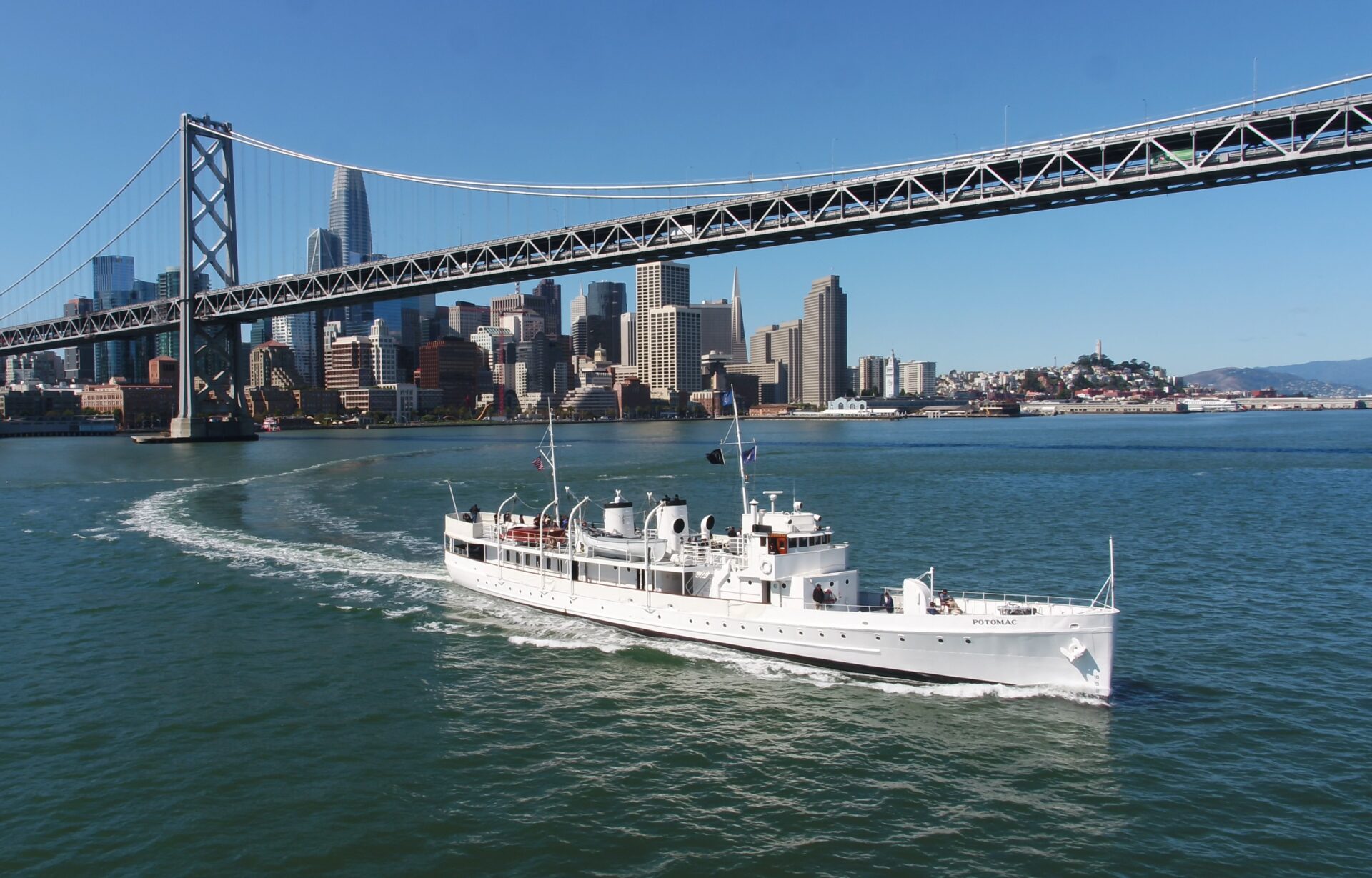
The vessel was built in 1934 and put into service as the Coast Guard cutter Electra. With a displacement of 416 gross tons and cruising speeds of 10 to 13 knots, she was commissioned as a US Navy vessel in 1936, and renamed the USS Potomac. She then served as Franklin Delano Roosevelt’s presidential yacht until his death in 1945. During this time the vessel hosted foreign dignitaries, high government officials, and British royalty, and was used for recreation. Among the activities were fishing, poker games, and family gatherings. FDR also reportedly spent endless hours onboard with his beloved stamp collection. After his death in 1945, the ship was brought to the West Coast.
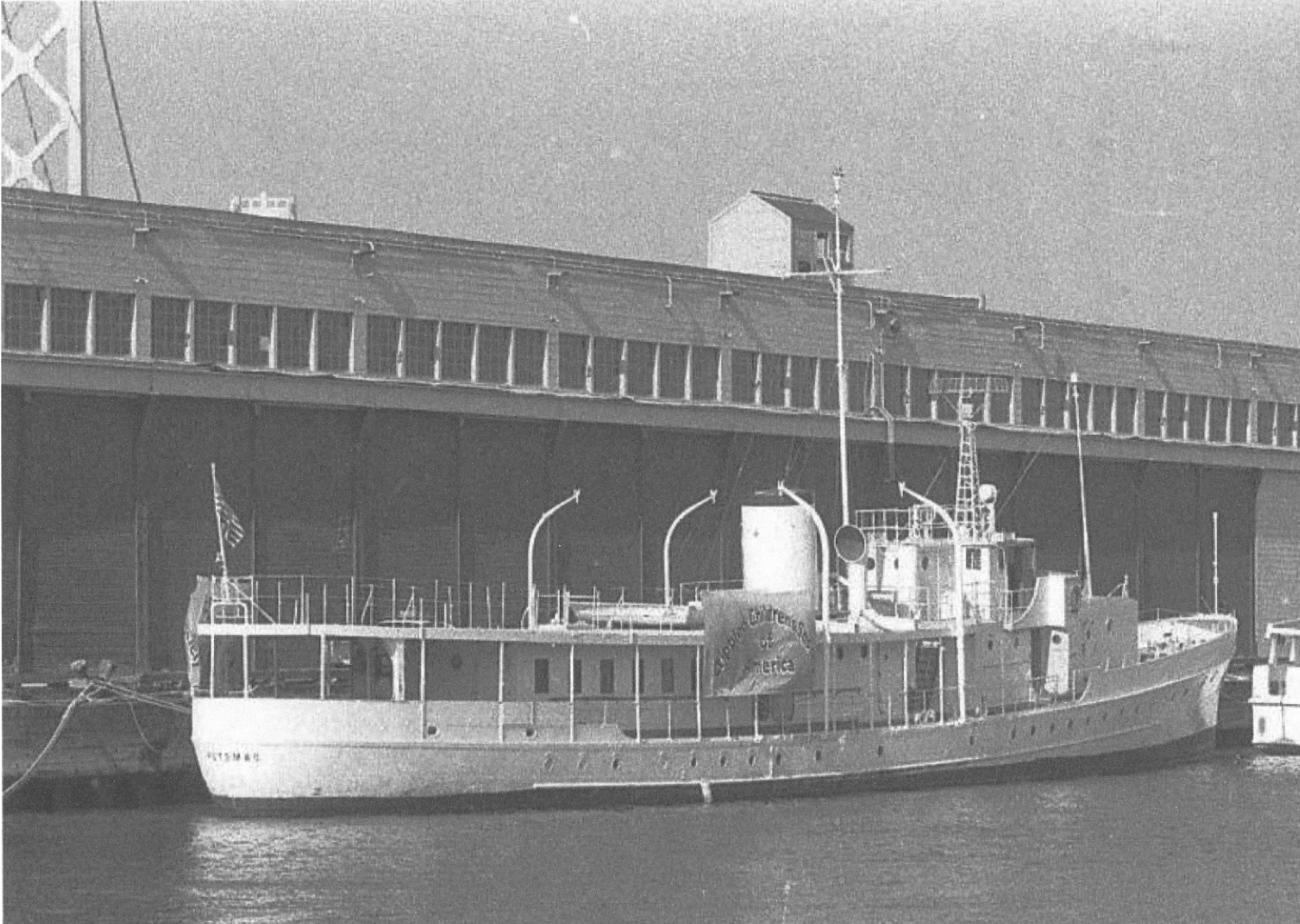
Today the Potomac docks at Jack London Square, where she has been since 1995, fully restored, and is open to the public for cruises and educational tours.
The ship is managed by the USS Potomac Association, a 501(c)(3) organization. The organization relies on income from its charter schedule and corporate and individual donations, together with support from a host of volunteers.
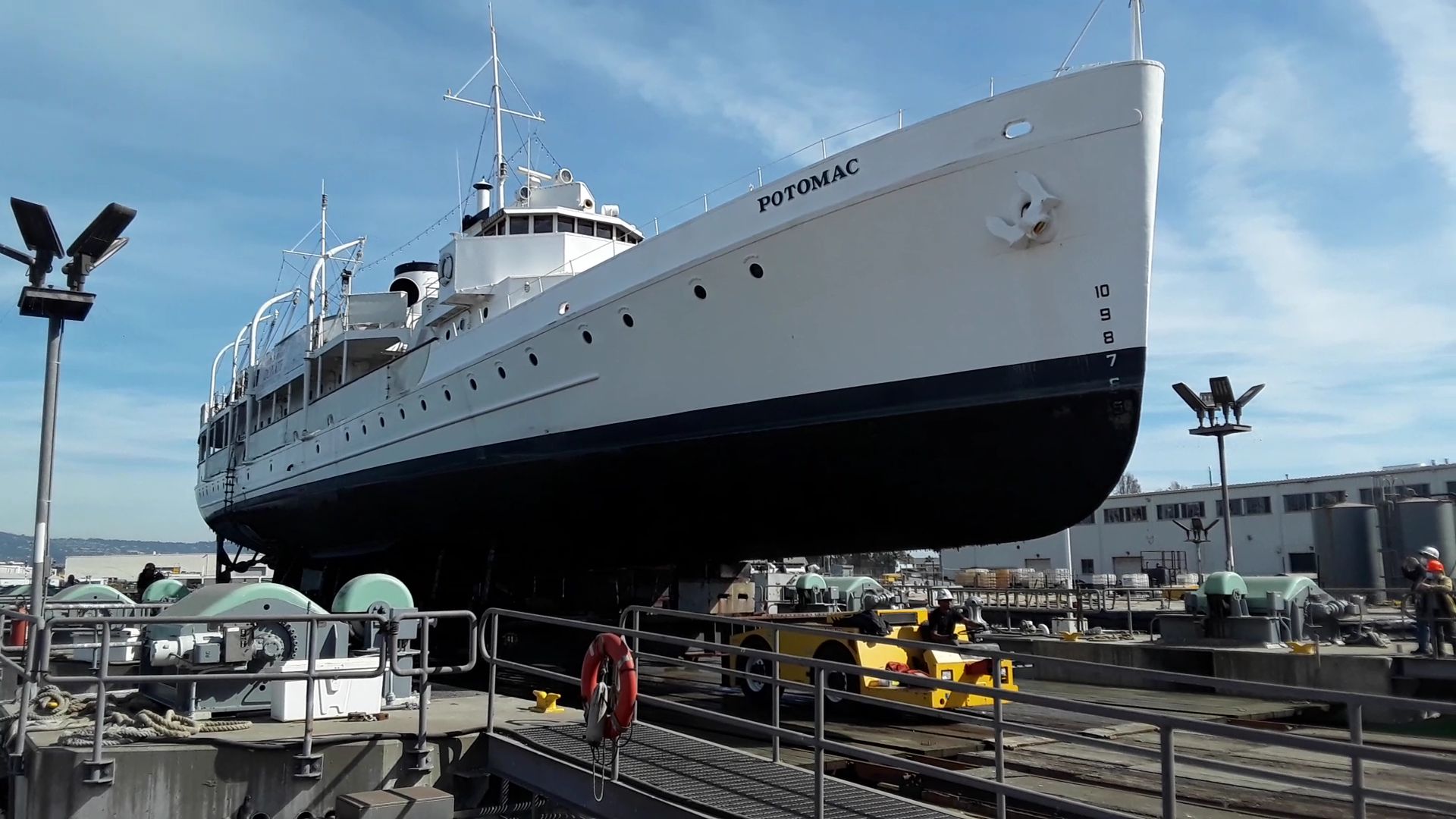
Once in the yard, the Potomac will undergo an extensive work schedule over two to three weeks, at an expected cost of $250,000. The association is now undertaking a fundraising effort to amass the needed funds. You can learn more and contribute here.
If you’d like to experience the USS Potomac, check the schedule of cruises, tours and events here.
Billionaire Lifestyle: Champagne and Caviar With Your Yachting?
We’re occasionally happy to see sailing covered in the general media. We’re more often disappointed. Sailors everywhere know they are often perceived as rich yachtsmen suffering the billionaire lifestyle. The reality is far different. Knowing you sail and also knowing you are not a billionaire does nothing to the impression so often portrayed in the general media.
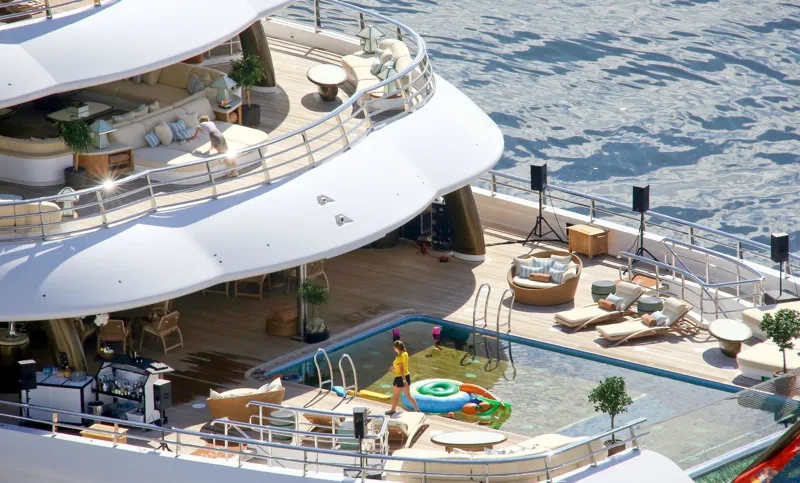
We feel compelled to highlight moments when sailing is being misrepresented, such as the recent article in the Marin IJ about possible date night options, which included “Dining on a Yacht,” saying, “You might not be a billionaire, but you can treat your loved one to a billionaire’s lifestyle thanks to a private chef service aboard a yacht.”
The world has become wealthier and sailboats/yachts far more upscale and comfortable. But do most sailors even have any desire for the billionaire lifestyle? The style where you sit and write checks for everyone else to do the sailing for you? It’s always nice to have a good meal on a boat, but is that why we have sailboats? There are about 800 billionaires in the US (maybe a handful of them sail) and there are three million sailors. So why the misperception?
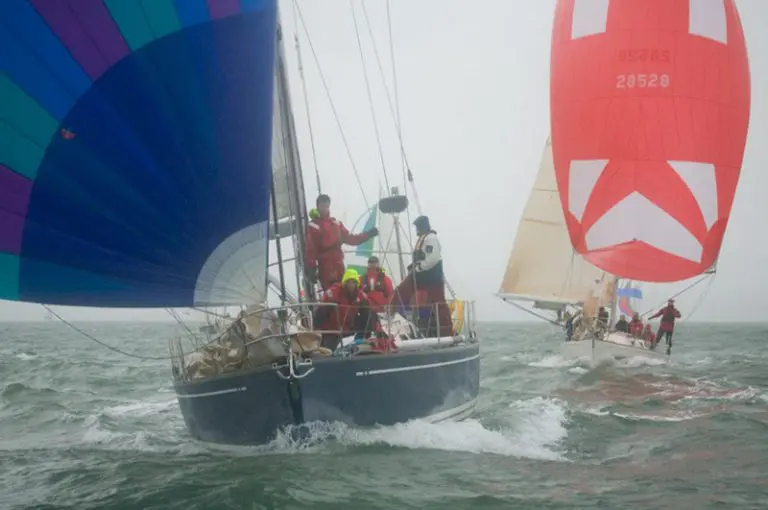
Most sailors we know simply love the feel of their hand on the tiller or the wheel, the challenge of getting to a destination, being immersed in nature, the subtlety of trimming sails, and the camaraderie of the crew. Do people sail for champagne and caviar? We don’t begrudge anyone their success or their pleasures, but the pleasure of sailing for most has nothing to do with luxury. If you want luxury, why not go to a hotel?
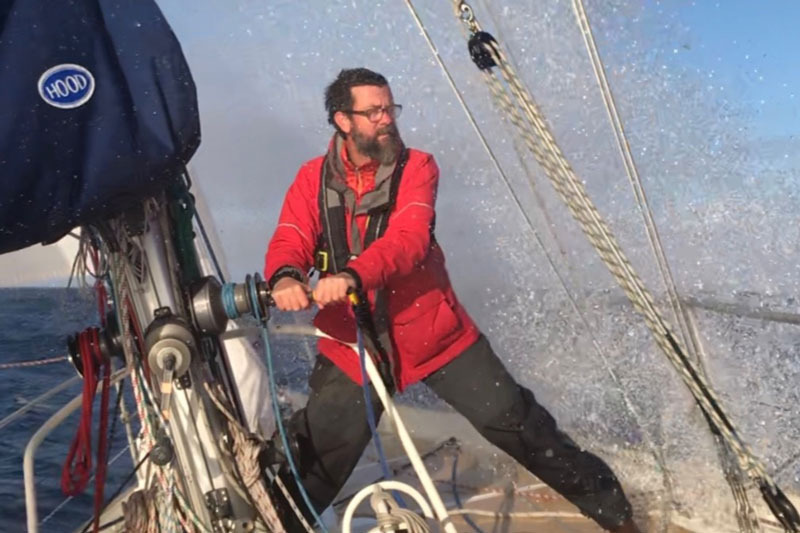
The stories that captivate us are those of Webb Chiles sailing around the world in a Moore 24, kids learning to sail in a community sailing program, sailing doublehanded to Hawaii, or piecing together the puzzle that is the Three Bridge Fiasco. Billionaire yachting? Yawn. Luxury yachting? Ho hum.
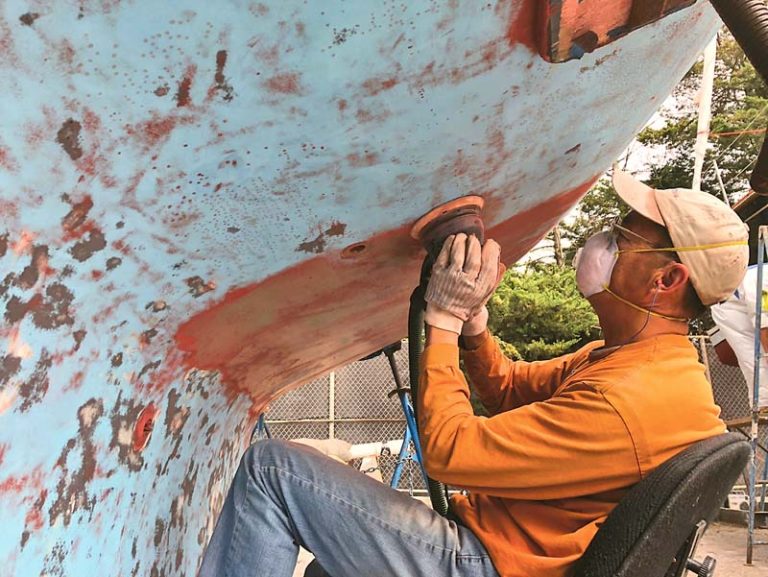
Stories like this do give us the opportunity to again point out you can become a sailor/yachtsman and go “yachting” every day for three months for $120 when you join the Cal Sailing Club in Berkeley. You can sail for free if you put your name on the Latitude 38 Crew List and find a crew to join or attend the a crew party at Berkeley Yacht Club. Of course, from there the sky is the limit. You could start an online bookstore and save up for 30 years and buy a $500 million 417-ft yacht like Jeff Bezos’ Koru. How many people consider that an interesting or desirable way to sail? Boring.
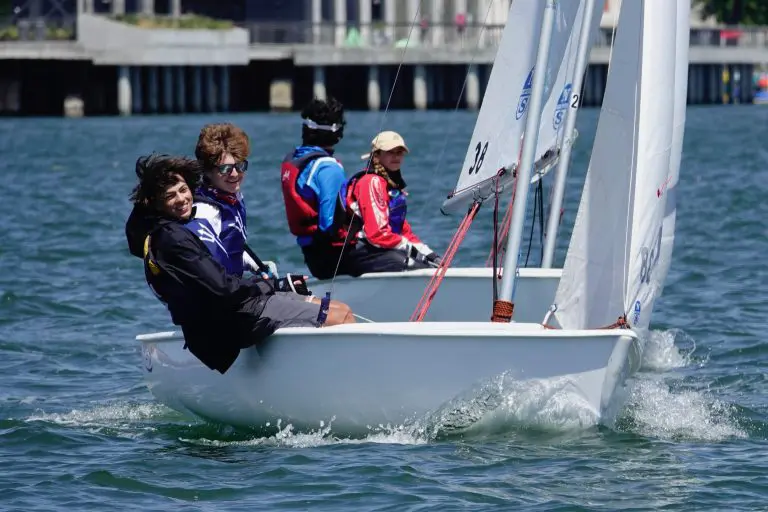
The Marin IJ story did give a nice shout-out to other inexpensive sailing options by suggesting you jump aboard Bay Area charter boats like the Adventure Cat in San Francisco or the Freda B in Sausalito. They’re good, solid sailing experiences with wind in your face and spray in the air.
There are rich yachtsmen, but there are also rich baseball players and golfers. There are the elite in any activity, but the label sticks with “yachting.” Maybe it all started with the mustard commercial? The most common caption submission in our monthly caption contest is, “Please pass the Grey Poupon.”
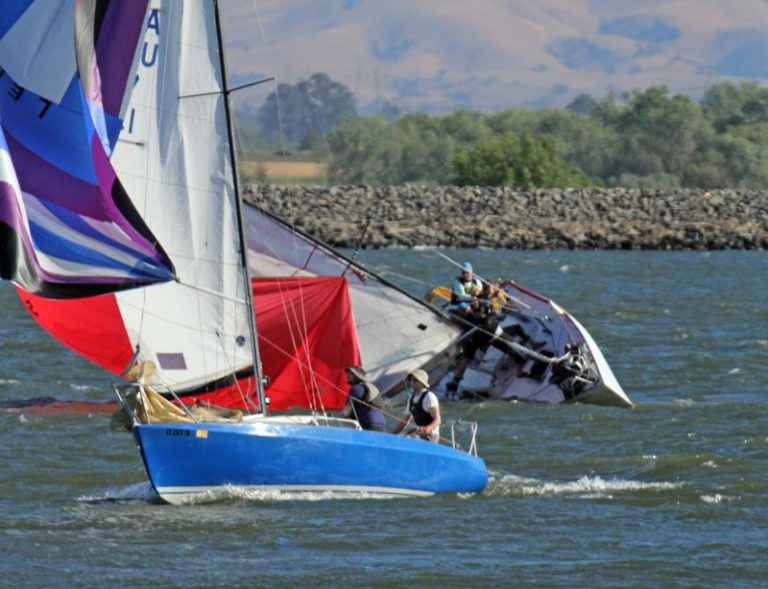
Dinner on a yacht may be a great date, though an even better date is a sunset sail with some beer and pretzels or wine and cheese, or an evening beer can race around the Bay.
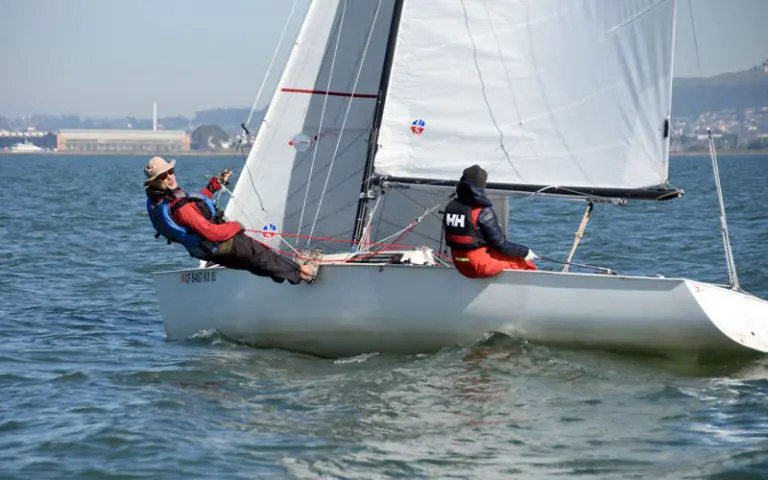
The truth is you can do a lot of “yachting” for less than the price of a couple of Taylor Swift concert tickets, treating your family to a couple of baseball games, or taking your family skiing, where the cost of an all-day private lesson is as high as $1400!
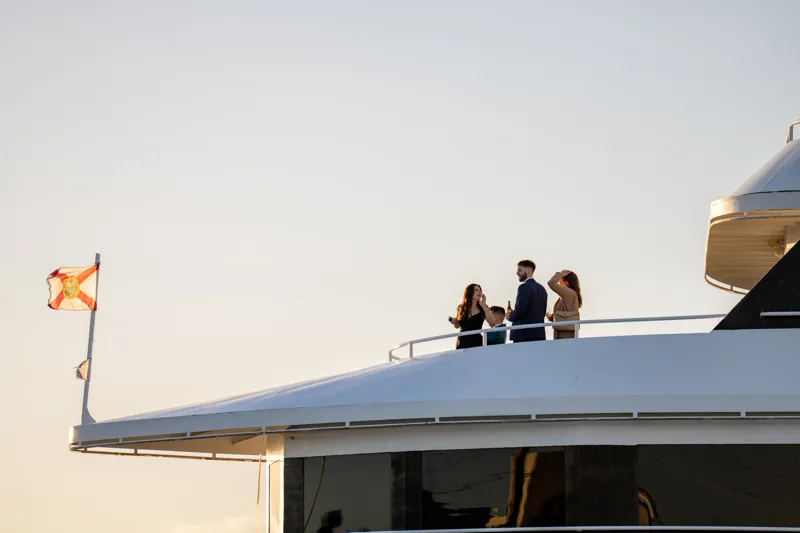
People say, “Perception is reality,” and the perception of elite yachting is often what keeps people away from sailing, or prevents funding for public-access docks and launch facilities for youth sailing. People can spend a lot of money on just about anything, but it’s a choice, not a requirement. In our Good Jibes podcast we ask many of our guests what their “dream boat” would be. No one has ever answered megayacht. Often the answer is a small, easy-to-sail cruiser or racer.
What most likely prevents people from being able to sail is spending money foolishly trying to mimic the billionaire lifestyle. It would be much cheaper and more fun to just go sailing.
You can sell your boat by listing it in our Classy Classifieds here.
Get Onboard With the ‘Latitude 38 BOGO Special’
This offer is available to new or returning subscribers only. This means first time subscribers, or you are a previous subscriber whose subscription lapsed one or more years ago. The same applies to your friend.
The ‘Latitude 38 BOGO Special’ will run from today through April 20.
The six-month subscription rates are as follows:
$18 – Third-Class Postage (US only, delivery time 2-3 weeks — USPS will not forward Third-Class mail)
$27.50 – First-Class Postage (US only, delivery time 2-3 days — FPO/APO [military] and correctional-facility subscriptions MUST be First Class.)
Follow the link below to sign up and give yourself and a friend the best gift ever!
Fill in the form for yourself, then write to [email protected] to provide the details of the second subscription (name, mailing address, phone number).
*This offer includes a free subscription to our 3 x weekly online stories in ‘Lectronic Latitude.


